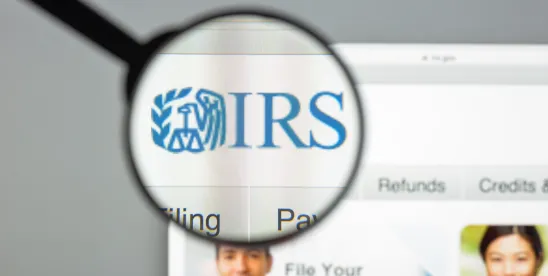The Internal Revenue Service recently announced its cost-of-living adjustments applicable to dollar limitations on benefits and contributions for retirement plans generally effective for Tax Year 2025 (see IRS Notice 2024-80). Most notably, the limitation on annual salary deferrals into a 401(k) or 403(b) plan will increase to $23,500, and the dollar threshold for highly compensated employees will increase to $160,000. This year’s notice also includes the optional SECURE 2.0 Super Catch-up amounts for participants ages 61-63. The more significant dollar limits for 2025 are as follows:
| LIMIT | 2024 | 2025 |
|---|---|---|
| 401(k)/403(b) Elective Deferral Limit (IRC § 402(g)) The annual limit on an employee’s elective deferrals to a 401(k) or 403(b) plan made through salary reduction. | $23,000 | $23,500 |
| Government/Tax Exempt Deferral Limit (IRC § 457(e)(15)) The annual limit on an employee’s elective deferrals concerning Section 457 deferred compensation plans of state and local governments and tax-exempt organizations. | $23,000 | $23,500 |
| 401(k)/403(b)/457 Catch-up Limit (IRC § 414(v)(2)(B)(i)) In addition to the regular limit on elective deferrals described above, employees over the age of 50 generally can make an additional “catch-up” contribution not to exceed this limit. (See special rule below for those aged 60–63) |
$7,500 | $7,500 |
| SECURE 2.0 Super Catch-up Age 60-63 (IRC § 414(v)(2)(E)(i)) Other than Plans described in 401(k)(11) or 408(p). | Not applicable | $11,250 |
| Defined Contribution Plan Limit (IRC § 415(c)) The limitation for annual contributions to a defined contribution plan (such as a 401(k) plan or profit sharing plan). |
$69,000 | $70,000 |
| Defined Benefit Plan Limit (IRC § 415(b)) The limitation on the annual benefits from a defined benefit plan. | $275,000 | $280,000 |
| Annual Compensation Limit (IRC § 401(a)(17)) The maximum amount of compensation that may be taken into account for benefit calculations and nondiscrimination testing. | $345,000 ($505,000 for certain gov’t plans) | $350,000 ($520,000 for certain gov’t plans) |
| Highly Compensated Employee Threshold (IRC § 414(q)) The definition of an HCE includes a compensation threshold for the prior year. A retirement plan’s discrimination testing is based on coverage and benefits for HCEs. | $155,000 (for 2024 HCE determination) | $160,000 (for 2025 HCE determination) |
| Highly Compensated Employee (“HCEs”) (SECURE 2.0 Sec. 603 – IRC § 414(v)(7)) Catch up contributions for HCEs earning above this limit in FICA wages for the preceding year MUST be ROTH contributions. Not Required for Plan Years beginning in 2025 | $145,000 | $145,000 |
| Key Employee Compensation Threshold (IRC § 416) The definition of a key employee includes a compensation threshold. Key employees must be determined for purposes of applying the top-heavy rules. Generally, a plan is top-heavy if the plan benefits of key employees exceed 60% of the aggregate plan benefits of all employees. | $220,000 | $230,000 |
| SEP Minimum Compensation Limit (IRC § 408(k)(2)(C)) The mandatory participation requirements for a simplified employee pension (SEP) includes this minimum compensation threshold. | $750 | $750 |
| SIMPLE Employee Contribution (IRC § 408(p)(2)(E)) The limitation on deferrals to a SIMPLE retirement account. | $16,000 | $16,500 |
| SIMPLE Catch-up Limit (IRC § 414(v)(2)(B)(ii))) The maximum amount of catch-up contributions that individuals age 50 or over may make to a SIMPLE retirement account or SIMPLE 401(k) plan. (See special rule below for those aged 60-63) | $3,500 | $3,500 |
| SECURE 2.0 Super Catch-up Age 60-63 (IRC § 414(v)(2)(E)(ii)) The maximum amount of catch-up contributions that individuals aged 60–63 may make to a SIMPLE retirement account or SIMPLE 401(k) plan. | Not Applicable | $5,250 |
| Social Security Taxable Wage Base See the Social Security Contribution and Benefit Base site. This threshold is the maximum amount of earned income on which Social Security taxes may be imposed (6.20% paid by the employee and 6.20% paid by the employer). | $168,600 | $176,100 |




 />i
/>i

